News
Is Winter Tire Installation Worth the Investment?
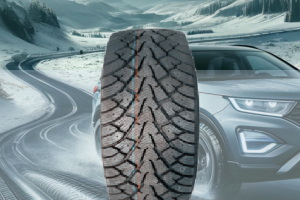
Every winter, drivers wonder if they really need those snow-hugging, salt-defying winter tires. Or is it just clever marketing by the tire industry? Let’s be honest: no one enjoys spending extra money on car stuff when there’s holiday shopping to do. But wait – what’s the real cost of sliding into a snowbank?
Installing winter tires is worth the investment if you value safety, traction, and not skidding into a mailbox. Winter tires are designed for snow, ice, and cold temperatures – things all-season tires only pretend to enjoy. They grip better, stop faster, and help your vehicle handle like it hasn’t been sipping antifreeze. Also these tires maintain their flexibility in freezing conditions, ensuring consistent performance when all-season tires might stiffen up. Plus, they reduce wear on your all-season tires by giving them a well-deserved winter break, ultimately extending their lifespan.

Don’t hit the brakes just yet – there’s a lot more snow-covered ground to explore. Stick around as we slide deeper into the snowy world of tire logic.
- Why do winter tires outperform all-season tires in the cold?
Rubber That Doesn’t Freeze Like Your Toes
Let’s start with the basics: rubber. Winter tires are made of a softer rubber compound that stays flexible even when temperatures drop below freezing. That flexibility means the tire can grip the road better. All-season tires, on the other hand, harden in the cold. They lose traction faster than I lose patience when untangling holiday lights.
Tread That’s Got Some Serious Bite
Winter tire tread patterns are more aggressive, with deeper grooves and lots of tiny slits called sipes. These aren’t just for show. They bite into ice and snow, providing the kind of grip that makes driving in a blizzard feel like less of a stunt scene from an action movie. All-season tires try to be everything to everyone, but that often means they’re mediocre in extreme winter.
Tested for the Cold, Not Just Talk
Winter tires aren’t just winter inspired – they’re winter tested. They carry the Three-Peak Mountain Snowflake symbol, which means they meet strict industry standards for severe snow performance. All-season tires? They don’t always qualify, no matter how confident they look in commercials.

Braking You Can Trust
When it comes to stopping, winter tires can shave several feet off your braking distance. In icy conditions, that’s the difference between a safe stop and explaining to your neighbor why your bumper is now part of their hedge.
Cold-Weather Champions
So yes, winter tires outperform all-seasons in the cold. It’s not marketing hype – it’s science, rubber chemistry, and really thoughtful tread design. If your winters include actual winter, you’ll want the real deal on your wheels.
- Are winter tires only useful on snowy roads?
Winter Tires Aren’t Just for Snowy Showdowns
Ah, a classic myth – like thinking kale tastes good. Winter tires aren’t just for blizzards and snowdrifts. They’re also champs on cold, dry pavement. That’s because they’re made with a magical mix of rubber and flexibility that doesn’t stiffen in cold weather. So even when the roads are bare, your winter tires still perform like caffeinated figure skaters.
Cold Weather, Clear Roads – Still Beneficial
You know those frosty mornings when your car door is frozen shut, but the roads look deceptively normal? That’s the kind of day when winter tires shine. They grip better when temperatures dip, even if snowflakes are nowhere in sight. And if the road is icy? Forget it – your summer or all-season tires might as well be banana peels.

7°C: The Magic Number
The general rule of thumb? When the temperature drops below 7°C (45°F), the compound in all-season tires starts to harden. Meanwhile, winter tires stay supple, maintaining traction and control even on cold, dry roads. So unless you live in a place where “cold” means putting on socks with sandals, winter tires are a good idea.
Cold Is the Real Villain
In the end, it’s not about snow – it’s about temperature. If winter is lurking outside your window, your tires should be ready to handle it, even if the snow plows are still asleep.
- Do I need four winter tires or just two?
Half a Plan Is No Plan at All
If you’re only installing two winter tires, you might as well wear flip-flops and a parka. You’ll still be cold, and now you look confused.
Mixing winter and all-season tires throws your car’s handling into chaos. It’s like putting ice skates on your front feet and sneakers on the back. Or worse – the other way around. Your car won’t know whether to grip or slide, so it does both. Poorly.
All Four or Nothing
Whether your vehicle is front-wheel, rear-wheel, or all-wheel drive, four winter tires are essential. That’s because stopping, turning, and accelerating all depend on consistent traction. Half-measures here result in whole problems later. Think unpredictable oversteer, unstable braking, and a chance to appear on a viral “fails on ice” compilation.

The Physics Don’t Lie
If only the front tires are winter-rated, they grip while the rears slide – causing the vehicle to spin. If only the rear tires are winter-rated, the fronts won’t steer properly. In both cases, your car becomes a confused penguin on roller skates.
Four Tires = Full Confidence
When all four corners of your car are working together, you gain confidence, control, and comfort – even in the most unpredictable winter conditions. No drama, no surprise spins, just smooth, winter-ready driving.
Four’s the Magic Number
So go all in or don’t go at all. Four winter tires working in harmony are like synchronized swimmers – graceful, smooth, and far less likely to crash into a snowbank.
- Will winter tires wear out faster?
Only If You Abuse Them
Yes, winter tires can wear out faster – but only if you treat them like year-round sneakers. Winter tires are like snow boots: warm, grippy, and made for cold conditions. But wear them in the summer, and they’ll melt faster than your patience in a traffic jam.
Not Built for Summer
That soft rubber compound we praised earlier? It performs wonders in cold, but in warm temps, it wears quickly and unevenly. The treads also aren’t optimized for hot asphalt, meaning you’re not getting the best performance – or lifespan – by keeping them on past winter.
Smart Habits for Longevity
When used appropriately – from the first frost to the spring thaw – winter tires can last for several seasons. Rotate them regularly, keep them properly inflated, and avoid unnecessary wheel spins. And once the tulips start blooming, swap them out for all-season or summer tires and give them a cozy storage space (no direct sunlight, please).
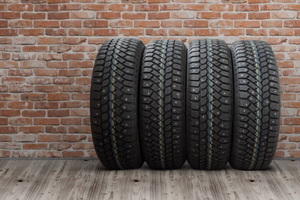
Winter Tires Deserve a Break Too
Taking them off in spring doesn’t just preserve their rubbery goodness – it also helps your all-season tires last longer, since each set is doing half the work. A tire vacation, if you will.
Use Them Right, They’ll Treat You Right
So yes, they can wear out faster. But if you use them only in winter and store them well, they’ll stay loyal for years – and won’t end up bald before your uncle at the family reunion.
- Are winter tires noisy and uncomfortable?
Winter Tires Have Evolved
Winter tires used to sound like a marching band in a snowstorm. But modern versions? Much more refined. They still hum a bit – like a gentle snowplow lullaby – but it’s not the cacophony it once was. Tire manufacturers have discovered the magic of tread design and silica compounds. Joyroad’s winter models, for instance, roll smoother and quieter than you’d expect from such rugged performers.
Why the Extra Noise?
The increased tread depth and biting edges that make winter tires excellent in snow and ice also make them slightly louder on dry pavement. It’s the price of having superhero traction. Think of it as the sound of safety – a soft whisper reminding you that you’re not going to slide into that intersection.
Comfort Level: Surprisingly High
Contrary to old myths, winter tires don’t make your ride feel like a tractor on gravel. In fact, many report that winter tires feel more planted and secure, especially when the roads get slick. That extra stability? It adds to the feeling of comfort. You’re not bracing for disaster – you’re cruising through it with calm assurance.
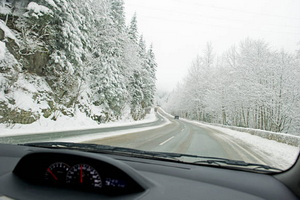
The Trade-off Is Worth It
Sure, on a pristine highway in June, summer tires feel silkier. But that’s like complaining your snow boots don’t breathe in August. Winter tires do what they’re designed to do – keep you safe, steady, and surprisingly serene.
Comfortably Capable
So no, they’re not loud, obnoxious beasts. They’re more like winter warriors with good manners – reliable, composed, and only slightly chatty when the roads are clear.
- Can I use winter tires with tire pressure monitoring systems (TPMS)?
Absolutely – They’re Fully Compatible
Yes, winter tires can be used with TPMS. They don’t argue. They don’t bicker. They actually work together quite nicely, thank you. The key lies in the sensors, not the rubber.
TPMS Works with Wheels, Not Tires
TPMS sensors are installed in the wheels, not the tires themselves. So if you mount your winter tires on a separate set of wheels (which many people wisely do), you’ll either need new TPMS sensors for those wheels or transfer the existing ones. It’s like musical chairs, but for your rims.
No Sensors? No Problem – Just Annoying Warnings
If you choose not to install TPMS sensors on your winter wheels, your vehicle’s dashboard might light up with a cheerful little warning that says, “Hey! I can’t find the sensors!” It doesn’t mean danger, but it can be a persistent pest, kind of like your uncle who keeps forwarding chain emails.
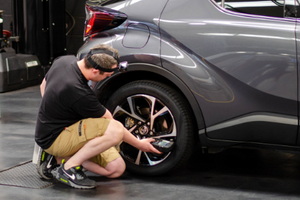
Installation Tips
Have a pro do the switch. They’ll ensure the sensors are correctly installed, reprogrammed (if needed), and calibrated. Some newer vehicles can even reset the TPMS automatically – just like they know when you’re eating in the car without permission.
No Compatibility Drama Here
So yes, you absolutely can use winter tires with TPMS. You just have to plan the sensor setup, and everything will function smoothly – like warm cocoa on a cold day.
- What makes Joyroad winter tires a smart choice?
Performance, Value, and Certificates – Oh My!
Joyroad winter tires are like the reliable friend who shows up with snacks and jumper cables. First, they’re engineered for serious winter conditions – snow, ice, slush, and everything in between. Second, they’re budget-friendly without being budget-built. That means you get strong performance without emptying your wallet.
Smart Compound, Smarter Tread
The rubber compound stays flexible in freezing temperatures, so you get better grip and shorter stopping distances. The tread design channels slush and water away like it’s directing winter traffic. And those biting edges? Think of them as tiny snow claws working overtime for traction.
Globally Certified
Joyroad doesn’t mess around when it comes to quality. Their winter tires meet the export certifications required in multiple countries, so you’re not just getting good tires – you’re getting approved good tires. Peace of mind comes baked in.
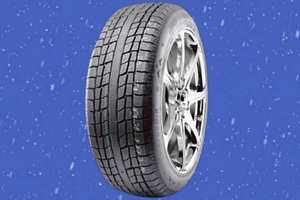
Consistency from the Factory Floor
Produced in facilities with a daily capacity of 50,000 pieces, Joyroad tires go through quality checks tighter than TSA during holiday travel. That means what’s on your car is as tested as your patience during a snowstorm.
Smart Choice, No Compromises
If you want winter tires that balance safety, comfort, value, and dependability – Joyroad delivers. No drama. No sticker shock. Just tires that do their job beautifully, even when winter doesn’t.
Conclusion
Winter tire installation isn’t just an investment in rubber – it’s peace of mind. With the right set, like those from Joyroad, you’re safer, steadier, and maybe even a little smug. Because while others slide around, you’re gripping the road like a snow-season superhero. Worth it? You bet your frosty bumper.





